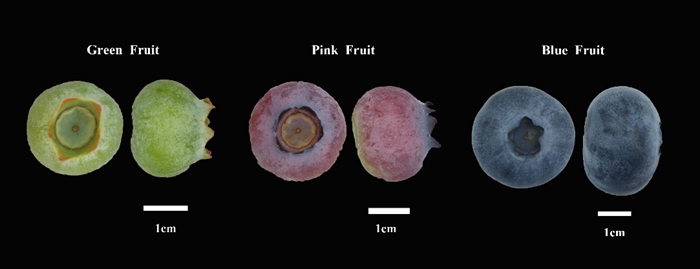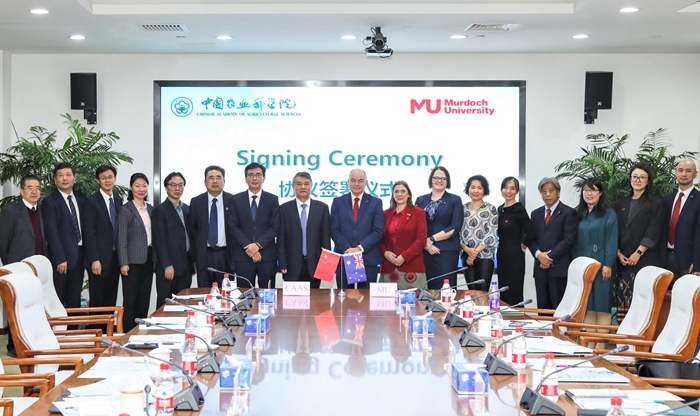Experts from the Institute of Pomology analyzed the molecular mechanism of abscisic acid signaling response genes regulating anthocyanin synthesis in blueberry
Recently, the research group of Song Yang, berry fruit cultivation and physiological innovation team at the Institute of Pomology of Chinese Academy of Agricultural Sciences (IP, CAAS), revealed the important regulatory role of abscisic acid (ABA) signaling response genes in the synthesis of blueberry anthocyanin. The results were published in the JCR Q1 journal Plant Physiology and Biochemistry (IF: 6.5).
Anthocyanins are important secondary plant metabolites that give rich color to plant nutrient tissues and reproductive organs, and protect plants from reactive oxygen species produced under environmental stress. Blueberry is rich in anthocyanin and widely distributed around the world, and is favored by consumers because of its delicate taste and high nutritional value. At present, the mechanism of anthocyanin synthesis and accumulation in blueberry is relatively backward compared with that of model plants. And there are no effective functional genes that can be used for molecular assisted breeding and quality improvement of blueberry anthocyanin content. The exogenous hormone ABA can regulate anthocyanin accumulation, but its mechanism is still unclear. It is of great significance to identify the anthocyanin synthesis mechanism for the regulation of blueberry breeding and cultivation.
In this study, a transcription factor VcbZIP55 was screened by RNA-Seq in response to ABA signaling and positively regulating blueberry anthocyanin synthesis. The function of VcbZIP55 to promote anthocyanin synthesis was identified in tobacco leaves, blueberry leaves and blueberry fruits by transient expression transgenic experiment. In addition, this study also confirmed that this gene can promote anthocyanin synthesis in blueberry through stable transformation experiments. And obvious anthocyanin accumulation was observed in both blueberry transgenic adventitious shoots and seedlings. Based on Yeast one-hybrid assay (Y1H) and transient expression in tobacco leaves, it was demonstrated an interaction between VcbZIP55 and a G-Box motif on the VcMYB1 promoter to activate the expression of VcMYB1. Through this study, we aim to further elucidate the pathway of anthocyanin synthesis in blueberry, enrich the regulatory network of plant anthocyanin metabolism, and establish a theoretical foundation for investigating the molecular mechanism of plant hormone regulation of anthocyanin synthesis.

-
 May 11, 2024WRI Deepens Agricultural Technology Cooperation with Agricultural Research Institutions in Uzbekistan
May 11, 2024WRI Deepens Agricultural Technology Cooperation with Agricultural Research Institutions in Uzbekistan -
 Apr 28, 2024CAAS President Meets President of Murdoch University
Apr 28, 2024CAAS President Meets President of Murdoch University -
 Apr 18, 2024Opening Ceremony of the Training Workshop on Wheat Head Scab Resistance Breeding and Pest Control in Africa Held in CAAS
Apr 18, 2024Opening Ceremony of the Training Workshop on Wheat Head Scab Resistance Breeding and Pest Control in Africa Held in CAAS -
 Apr 03, 2024IPPCAAS Co-organized the Training Workshop on Management and Application of Biopesticides in Nepal
Apr 03, 2024IPPCAAS Co-organized the Training Workshop on Management and Application of Biopesticides in Nepal -
 Mar 28, 2024Delegation from the School of Agriculture and Food Science of University College Dublin, Ireland Visit to IAS, CAAS
Mar 28, 2024Delegation from the School of Agriculture and Food Science of University College Dublin, Ireland Visit to IAS, CAAS
